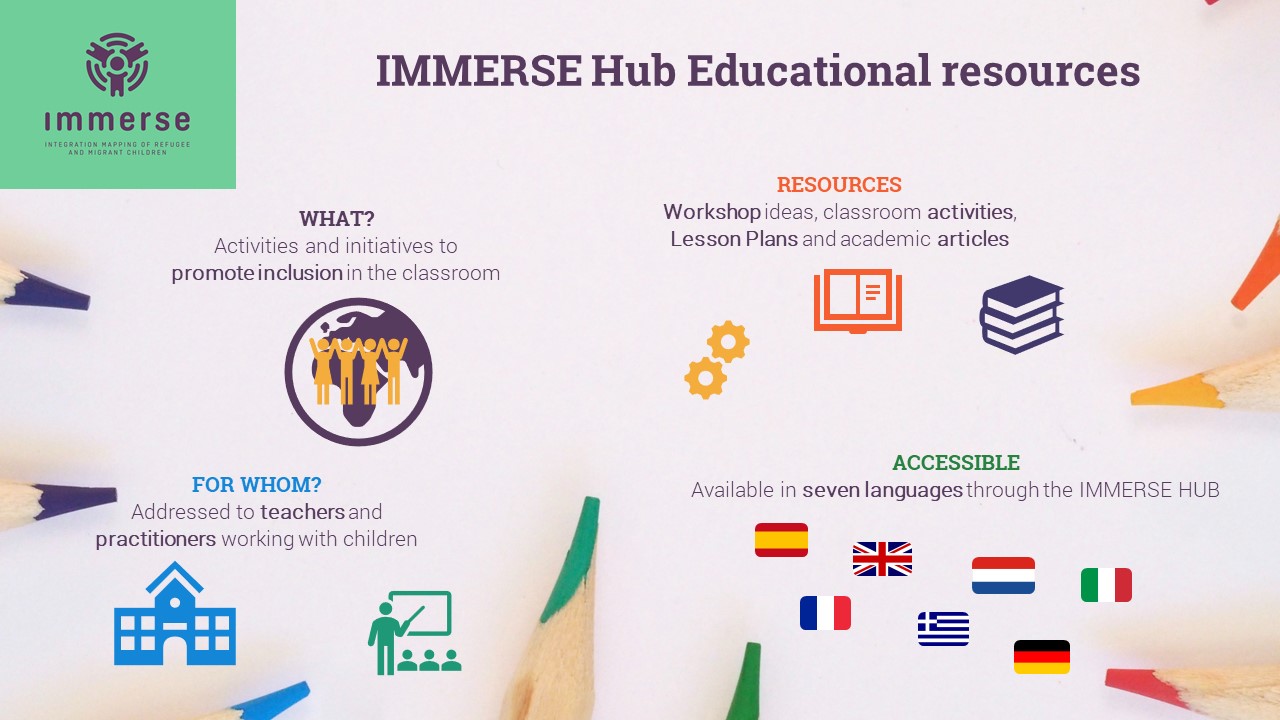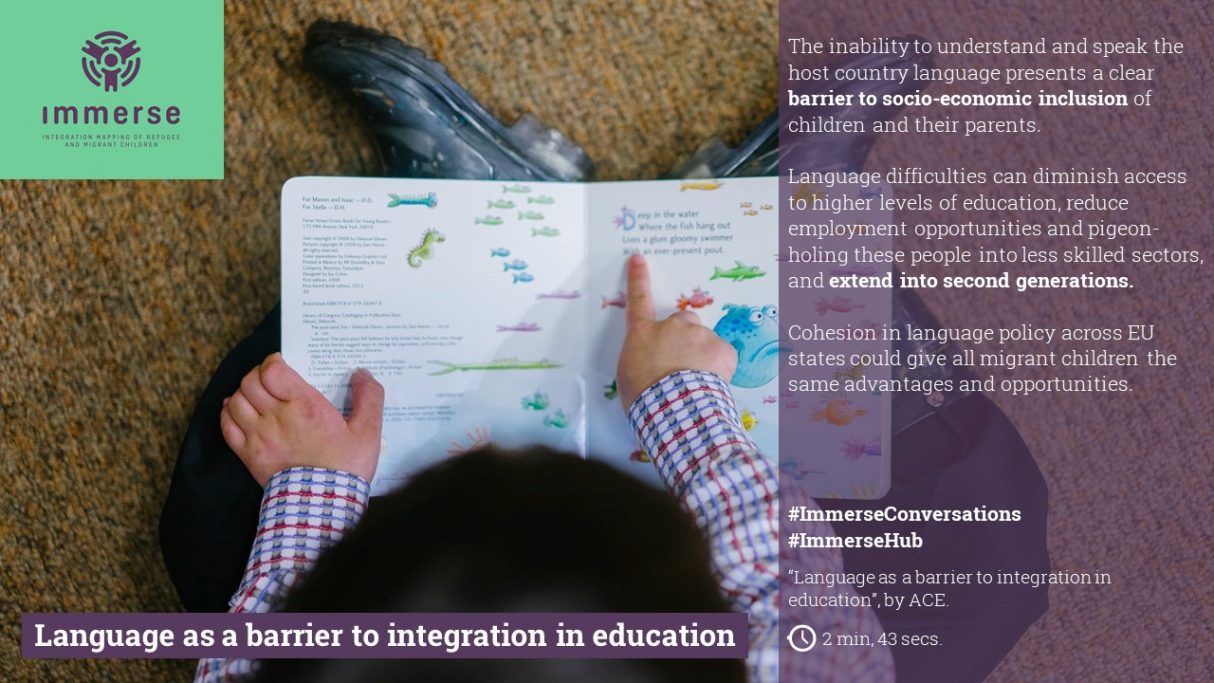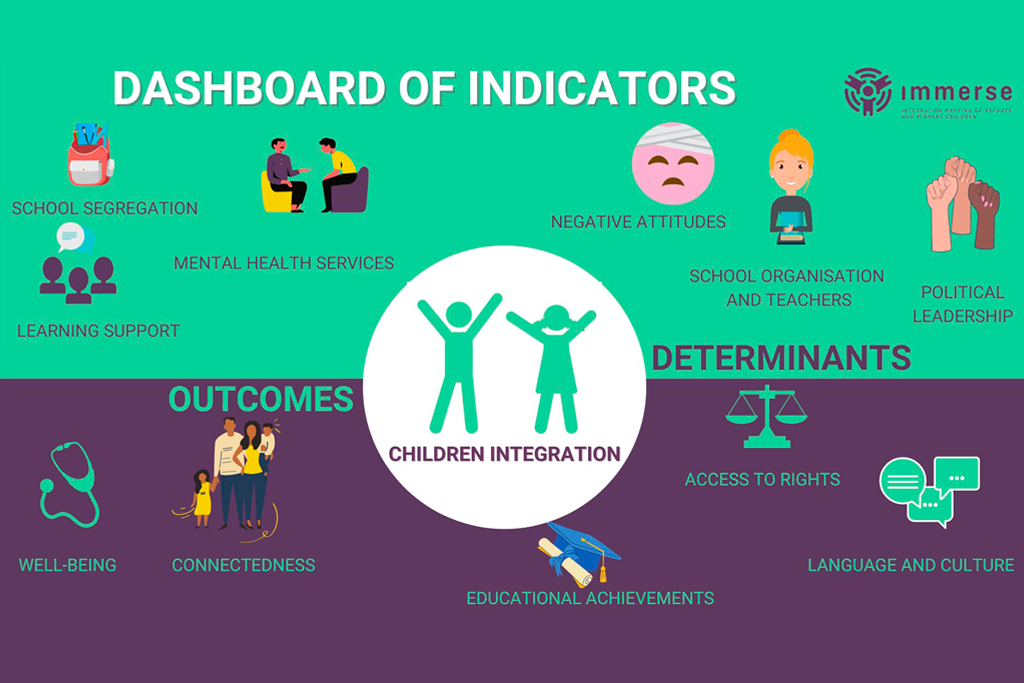Children’s Corner
Children are the main focus of the IMMERSE Project They’ve been part of the project from the start, helping decide how to do things. IMMERSE set up a Children and Young People’s Advisory Group with young migrants to ensure that children and young people’s voices were included. Involving children in research helps us to understand children’s lives better.
The project has developed new tools and data to help schools and governments assess how well refugee and migrant children are adapting to their new schools and how to help them along the way.
The IMMERSE project had 25,000 children participating, and the majority, 60%, came from migrant backgrounds. These children were from six European countries: Belgium, Ireland, Italy, Germany, Greece, and Spain.
The IMMERSE Children’s Corner is a space where Children, parents, teachers and other professionals supporting the inclusion of migrant and refugee children can find information about:



